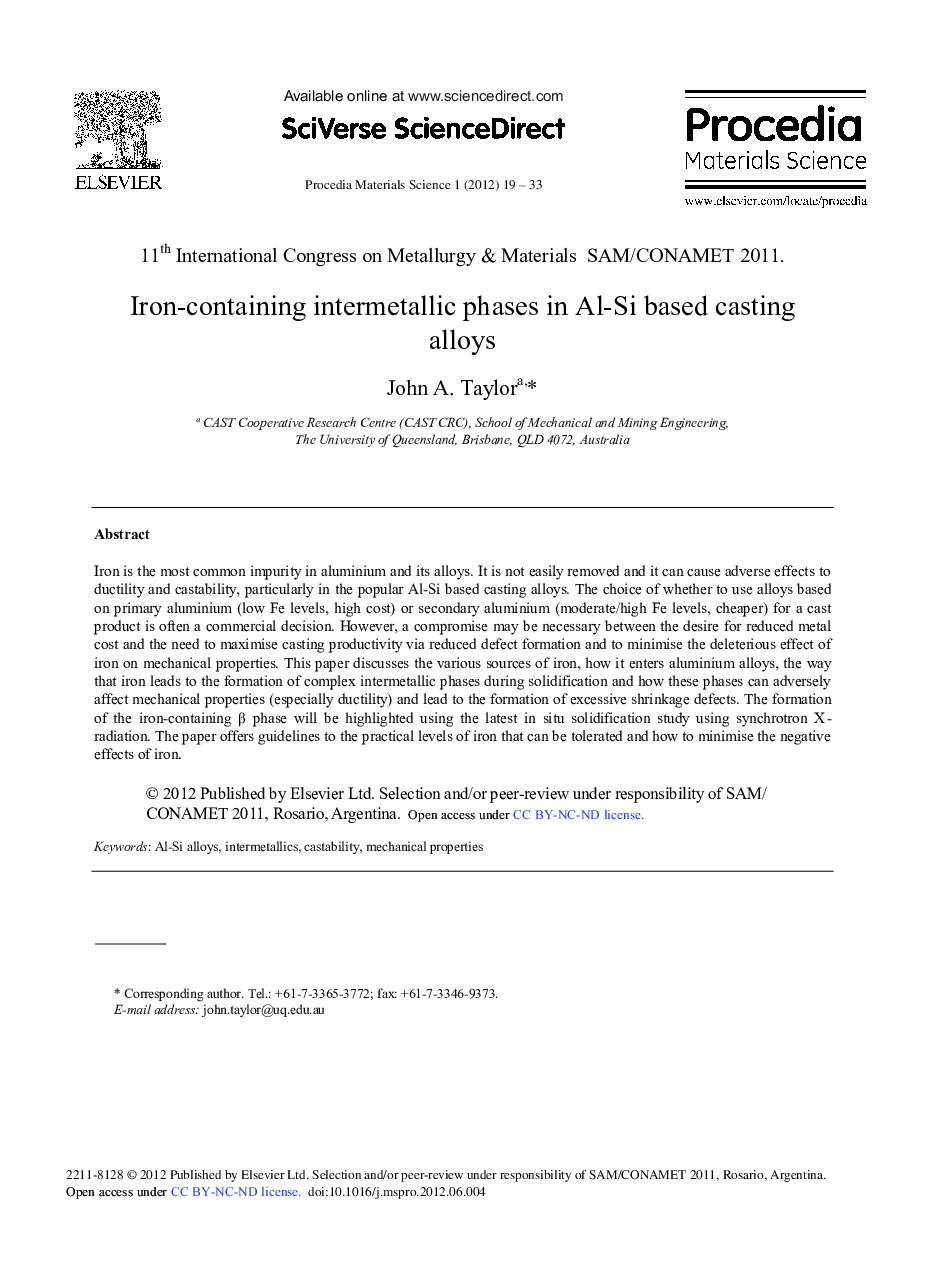| Article ID | Journal | Published Year | Pages | File Type |
|---|---|---|---|---|
| 1634851 | Procedia Materials Science | 2012 | 15 Pages |
Iron is the most common impurity in aluminium and its alloys. It is not easily removed and it can cause adverse effects to ductility and castability, particularly in the popular Al-Si based casting alloys. The choice of whether to use alloys based on primary aluminium (low Fe levels, high cost) or secondary aluminium (moderate/high Fe levels, cheaper) for a cast product is often a commercial decision. However, a compromise may be necessary between the desire for reduced metal cost and the need to maximise casting productivity via reduced defect formation and to minimise the deleterious effect of iron on mechanical properties. This paper discusses the various sources of iron, how it enters aluminium alloys, the way that iron leads to the formation of complex intermetallic phases during solidification and how these phases can adversely affect mechanical properties (especially ductility) and lead to the formation of excessive shrinkage defects. The formation of the iron-containing β phase will be highlighted using the latest in situ solidification study using synchrotron X-radiation. The paper offers guidelines to the practical levels of iron that can be tolerated and how to minimise the negative effects of iron.
